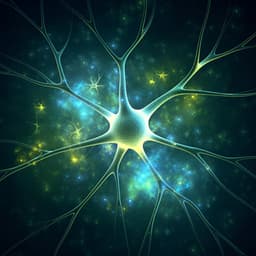
Physics
Plasmonic nanostar photocathodes for optically-controlled directional currents
J. Pettine, P. Choo, et al.
Discover how plasmonic nanocathodes are revolutionizing femtosecond photocurrent control in nanoelectronic devices! This groundbreaking research by Jacob Pettine, Priscilla Choo, Fabio Medeghini, Teri W. Odom, and David J. Nesbitt reveals all-optical methods to steer currents via multiphoton photoemission and angular control using laser manipulation.
Playback language: English
Related Publications
Explore these studies to deepen your understanding of the subject.







